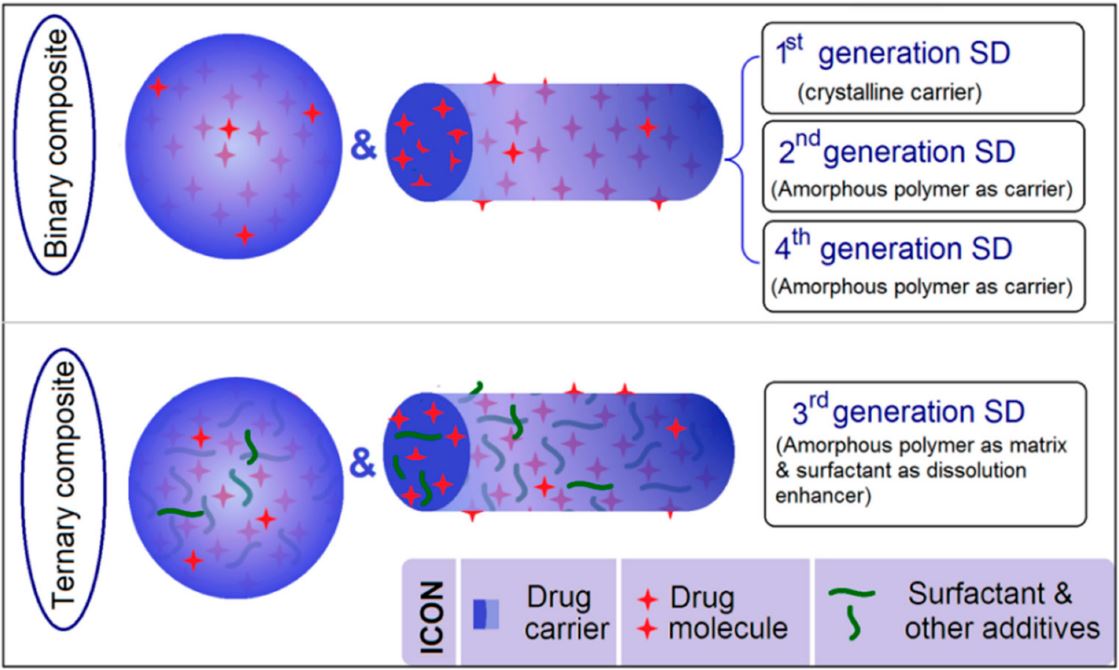Fast Dissolving of Ferulic Acid via Electrospun Ternary Amorphous Composites Produced by a Coaxial Process

Enhancing the dissolution of insoluble active ingredients comprises one of the most
important issues in the pharmaceutical and biomaterial fields. Here, a third generation solid
dispersion (3rd SD) of ferulic acid was designed and fabricated by a modified coaxial electrospinning
process.
A traditional second generation SD (2nd SD) was also prepared by common one-fluid
blending electrospinning and was used as a control. With poly (vinyl alcohol) as the fiber matrix
and polyvinylpyrrolidone K10 as an additive in the 3rd SDs, the two electrospinning processes
were investigated. The prepared 2nd and 3rd SDs were subjected to a series of characterizations,
including X-ray diffraction (XRD), scanning electron microscope (SEM), hydrophilicity and in vitro
drug dissolving experiments.
The results demonstrate that both SDs were monolithic nanocomposites and that the drugs were amorphously distributed within the matrix. However, the 3rd SDs had better morphology with smaller size, narrower size distribution, and smaller water contact angles than the 2nd SDs. Dissolution tests verified that the 3rd SDs could release their loaded cargoes within 60 s, which was over three times faster than the 2nd SDs. Therefore, a combined strategy based on the modified coaxial electrospinning and the logical selections of drug carriers is demonstrated for
creating advanced biomaterials. Do you want to read the full article?

